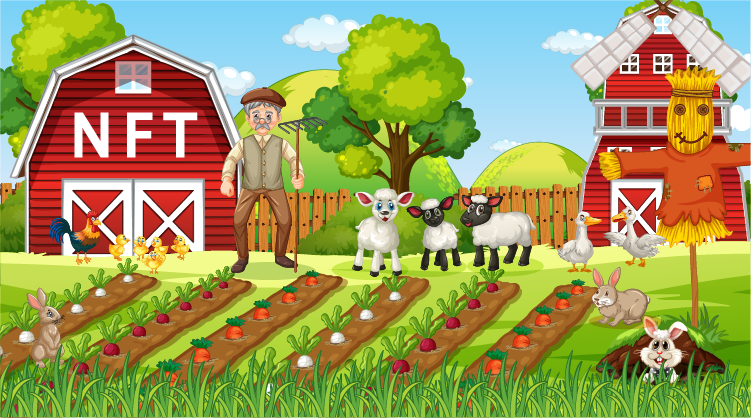
With the introduction of non-fungible tokens and their use in the gaming industry, it seems like we are slowly progressing towards Web 3. New and innovative NFT games allow players new options where they can earn NFTs, tokens that can later be converted into real money only by playing the games.
With the expansion of NFT games, there are a lot of things to pay attention to that for some beginners in this industry might be overwhelming. Apart from having to deal with connecting the game to your digital wallet where all NFTs and tokens will be stored, you also have to pay attention to all the different ways you can make money.
One of the most popular concepts of making money in NFT games is called NFT farming. In today’s article, we will dive deeper into this segment and find out more about how the process works and what it means.
What is NFT Farming?
NFT Farming represents staking NFTs in order to earn tokens or staking tokens to earn an NFT as a reward. The process is almost identical to yield farming. However, it is based around NFTs as a reward or a staked token, which creates liquidity and a utility for NFTs which are illiquid digital assets.
If you have experience with yield farming in the crypto world, it would be much easier for you to understand how NFT farming works. This is basically an extension to yield farming, but here you can use NFTs in order to earn rewards.
The concept of NFT farming brings many benefits to NFT games. First of all, it increases the liquidity of the in-game market which is very good for the game economy. Secondly, it encourages people to hold their NFTs which increases their market value since people cannot buy them.
Last but not least, NFT farming lets you utilize NFTs and bring them to work, which are otherwise sitting in your wallet as an illiquid asset.
How Does NFT Farming Work?
Considering that NFTs are digital assets, NFT farming works very similarly to yield farming. In yield farming, you need to put a token into a pool that earns you rewards as per the specified APY (annual percentage yield).
The only significant difference is that NFTs exist on various blockchains (mostly Ethereum). However, just because most modern blockchain networks are adding an NFT functionality to their infrastructure, they are interoperable since most networks follow certain standards. This makes them easier to connect with various applications.
Interoperability means that different systems can connect even though they are from different networks. In the case of NFTs as digital assets, they can be connected with multiple programs or smart contracts on different blockchains allowing you to earn rewards by staking your digital collectibles.
How to Get Started?
If you go with the traditional NFT farming method all you need to do is:
- Create a Wallet
- Choose a blockchain network to connect your NFTs
- Choose a certain token in the wallet, depending on the platform chosen.
Once you stake the token in a pool you can start earning rewards based on the proportion of the total pool. The staking portal can turn the compatible NFTs into vaults, in which case you can earn rewards.
This system is very popular in NFT games, where people stake their tokens in order to earn in-game rewards. One of the biggest games that captured the art of NFT Farming perfectly is Axie Infinity, where players earn in-game SLP tokens that they can sell for money or create new NFTs.
There are also other games like Wizardia which also offers a way to stake tokens and earn rewards.
This is a rather interesting system that brings many benefits for both the players and the entire network or game.



